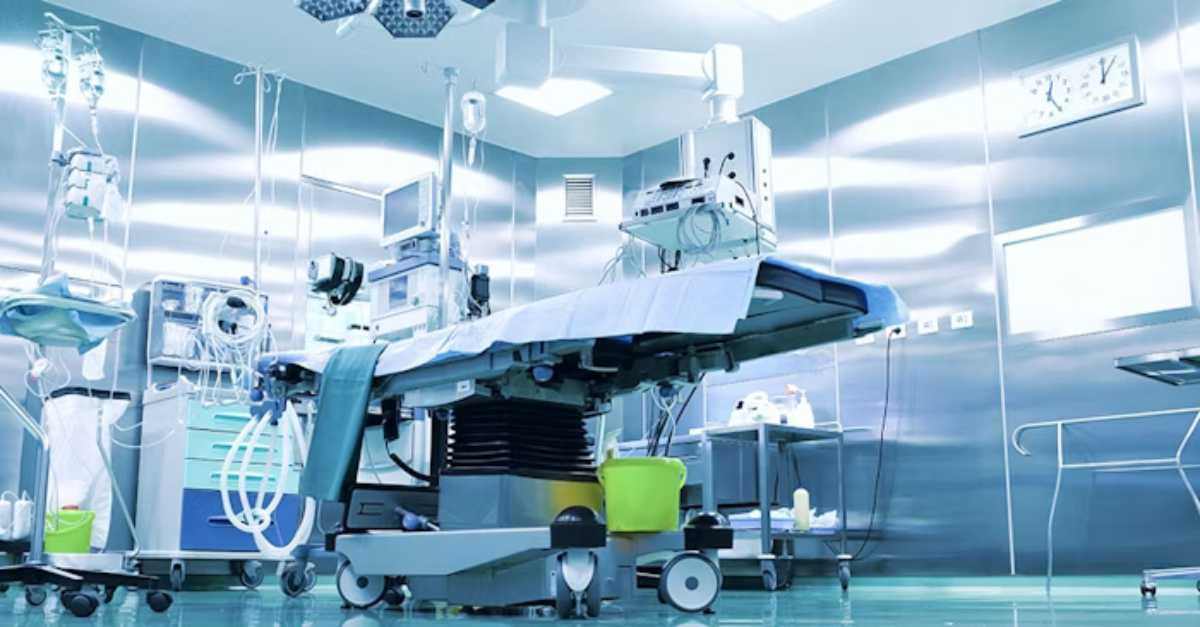
Managing the Full Medical Equipment Lifecycle
Discover how Accruent can help you serve your customers efficiently using Software to revolutionize your equipment lifecycle.
Solutions
Workplace Management Solutions
Real Estate Management Solutions
Maintenance Management Solutions
Energy Management Solutions
Engineering Document Management Solutions
Asset Management Solutions
Automate campus scheduling for classes, meetings, and exams with our EMS software.
Plan and manage conferences effortlessly with EMS software to impress guests and streamline operations.
Boost workplace flexibility and maximize space use with seamless desk and room booking.
Organize workplace or campus events smoothly, creating memorable experiences.
Optimize workspace, manage allocations efficiently, and reduce costs with our space management solutions.
Deliver projects on time and within budget by improving communication, collaboration, and efficiency with our software.
Streamline lease accounting for ASC 842, IFRS, and GASB compliance.
Manage leases efficiently by tracking key dates, analyzing costs, and ensuring compliance.
Centralize data and analytics for better insights, faster negotiations, and revenue growth.
Centralize facility and asset maintenance, automate work orders, and ensure compliance with our CMMS software.
Extend asset life, reduce downtime, and prevent costly repairs with data-driven monitoring.
Prevent equipment failures and extend asset life by detecting and addressing issues early.
Make sustainable, cost-efficient energy decisions by monitoring and optimizing power consumption.
Remotely monitor and control equipment with real-time data to predict issues, boost efficiency, and reduce downtime.
Easily share and collaborate on documents, creating a single source of truth for engineers and contractors.
Manage and analyze assets across their lifecycle to schedule maintenance, reduce downtime, and extend lifespan.
Improve visibility, automate work orders, and ensure compliance for efficient facility and asset management.
Resources
Browse our full library of resources all in one place, including webinars, whitepapers, podcast episodes, and more.
Support
Looking for access to technical support, best practices, helpful videos, or training tools? You’ve come to the right place.
About Accruent
Get the latest information on Accruent, our solutions, events, and the company at large.

Want to lower your medical equipment total cost of ownership (TCO) while improving quality of care? These actionable strategies can help.
Hospital administrators and medical practice managers know just how challenging it is to reach that balance. Americans spent a staggering $3.2 trillion on healthcare in 2016, and according to Modern Healthcare, medical supplies and equipment account for the most significant spike in healthcare spending. Hospitals are spending $93 billion per year on medical equipment lifecycle costs. And Becker’s CFO Report estimates hospitals are missing savings as much as 12% to 16% because of “lack of accurate information, internal resources, bandwidth and specialized expertise.”
That averages out to $12,000 per bed, per year. How can your healthcare organization effectively plan for and reduce the total cost of ownership (TCO)?
First, familiarize yourself with the factors that contribute to your TCO and the actual lifecycle process.
TCO Lifecycle:
Factors that Affect TCO:
You should carefully analyze each of these pieces of the lifecycle and the factors that affect it. For example:
Technology then adds a whole new dimension to medical equipment. One study estimates medical practices are spending $32,500 per year, per full-time physician to buy, maintain and manage health information technology.
Before equipment is purchased, managers must determine how IT will be affected:
Whether you are managing a medical practice or a large healthcare organization, you must delicately balance risk, cost and benefits. Is the TCO worth the return on investment?
This is at the top of the list because providing top care should be your biggest priority. Will the new equipment improve patient care or offer better overall outcomes? In addition to the ethical reasons involved, improving care may result in meeting new quality care measures laid out by the Centers for Medicare and Medicaid, as well as other insurers.
Technology has created equipment that is both faster and smarter. In addition, newer equipment is usually more user-friendly, lessening the learning curve for new employees and making it easier to integrate with electronic health records.
If a piece of equipment allows you to bring specific procedures in-house, a new revenue stream is likely possible. For example, bringing lab equipment in-house not only allows you to treat specific conditions quickly, but will bring in revenue that you were outsourcing.
Continually paying for repairs is expensive. If you are spending a lot maintaining old equipment, it often makes sense to invest in new.
Being an early adopter of new technology may attract patients simply because other offices or hospitals do not have the equipment needed to treat them. Investing in new equipment sends a message that your office is cutting edge and up-to-date on the latest trends and treatments.
Watch this on-demand webinar to learn how a major healthcare system reduced equipment expenditure with total lifecycle management.
The most significant part of the decision-making process is gathering the necessary information.
By collecting data from various sources, you can make the best procurement decision, including clinicians, facilities and construction, IT and telecoms, biomedical engineering, procurement, finance, vendors and system integrators.
Analyze your current asset base, maintenance history of the old equipment and projected maintenance on the new equipment. Carefully compare product specifications, installation requirements and gather price benchmarking data. And gather a robust database of sources, models, manufacturers, new and used equipment, as well as trade-in options.
It is critical to have a transparent information pool. While healthcare technology has grown exponentially, many parts of healthcare are not connected and still exist in isolated silos. Numerous healthcare functions are sophisticated and tech-savvy, but they often produce disconnected data streams, making decision making impossible.
You can ultimately decide by connecting your data streams. For example, RFQ capital (supply chain) provides your benchmarking data, project capital (facilities) includes product specifications, routine capital (finance) gives insight into your current asset base, replacement capital (clinical engineering) gives you data on maintenance history, and project capital (facilitators) provides installation requirements.
To remain competitive and provide the highest quality care, physicians and healthcare organizations must have a strategy for keeping their equipment up-to-date. Taking into consideration the total cost of medical equipment ownership, as well as cost-saving strategies, will help your organization save money, become more productive, attract new patients and possibly find new revenue sources.
Learn more about how to improve medical equipment planning processes at every stage of the capital equipment lifecycle.
Discover how Accruent can help you serve your customers efficiently using Software to revolutionize your equipment lifecycle.
It can be tricky to juggle infection control and ongoing compliance while maintaining a high standard of patient care. The right tools can help.
See why original cost data is key in achieving high-level estimations for capital planning purposes – and how HTM leaders can access that information ...
Subscribe to stay up to date with our latest news, resources and best practices.
* To unsubscribe at any time, please use the “Unsubscribe” link included in the footer of our emails.